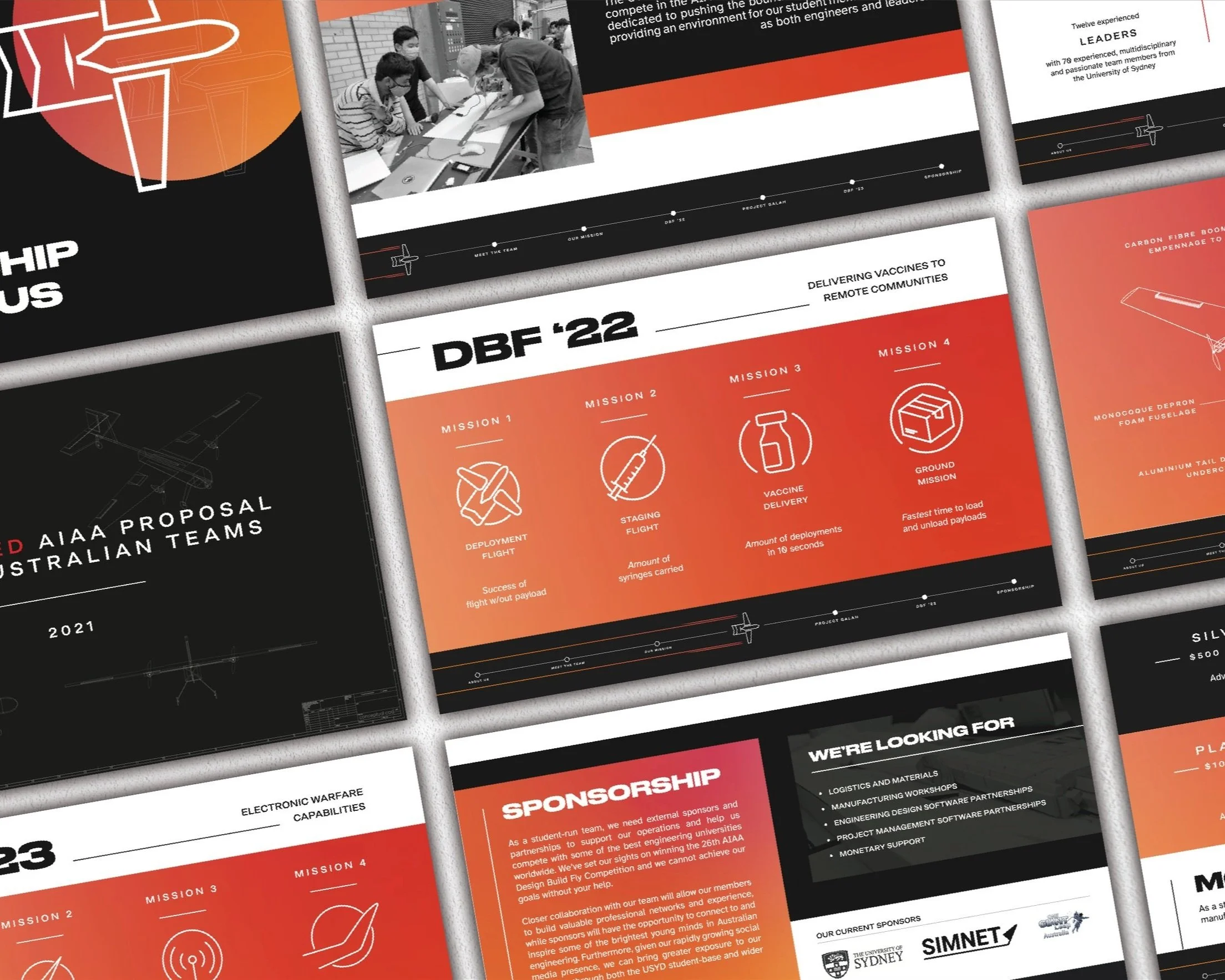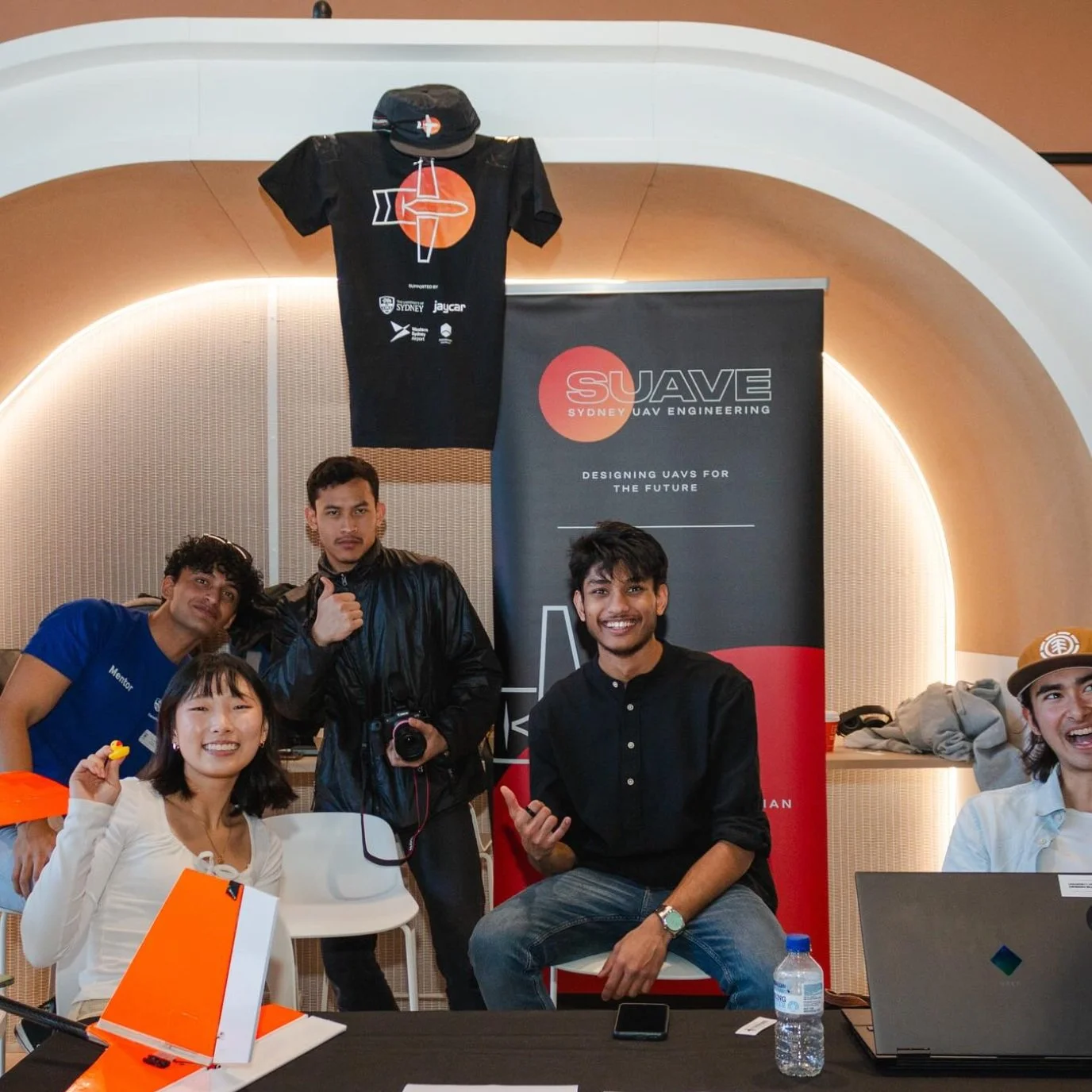Design Build Fly
Branding, marketing and graphic design for a university engineering society
Summary
Design Build Fly is an engineering society within the University of Sydney. Sydney UAV Engineering develops remote-controlled UAVs (Unmanned Aerial Vehicles) to compete in the AIAA Design Build Fly competition. They are dedicated to pushing the boundaries of UAV design while providing an environment for student members to thrive as engineers and leaders.
As the marketing and graphic design officer, my main role was to create new logos and branding for this up and coming society. Other initiatives included creating posters for recruitment events, content for the social media pages, a sponsorship prospectus document and merchandise.
Role
Marketing and graphic design officer
Timeline
September 2021 - May 2022
Team
Aakash Singh
Harsh Talathi
Tools
Adobe InDesign
Adobe Illustrator
Logos and Branding
The first task was to redesign the exisiting logo, to reflect a newer, more modern and innovative society. The president of the society wanted to keep elements of the original logos (which he designed) whilst also bringing in my design background to create a more aesthetically pleasing logo. I paid respect to the original shapes and the trailing motif, however I:
Updated the colour gradient to be less linear
Altered the plane’s trail to be thinner, as well as getting rid of the circle , to achieve balance and alter the focal points of the long form logo
Changed the font to reflect a more bold and modern society
Logos prior to our redesign
Logo redesign
Sponsorship prospectus
After establishing the brand guidelines and tone for the society, my fellow designer, Aakash, and I collaborated to create a sponsorship prospectus aimed at securing funding. We aimed to make this look very professional, impressive, and easily digestible in hopes of attracting new sponsors. We detailed information about our society and its objectives, alongside a clear call to action for funding. This included delineating various sponsorship tiers and specifying the corresponding monetary amounts requested at each stage.
Posters
Other tasks included creating posters and banners for recruitment events (Usyd open days, club fairs, industry events). Our objective was to craft bold and clear visuals to attract attention. Moreover, we streamlined the sign-up process for prospective members by incorporating QR codes on the posters, enabling direct access to the sign-up form. Below are a few examples:
Social media
Once we solidified our branding and visual identity, our focus shifted to cultivating an active, cohesive, and visually appealing social media presence. Our strategy involved curating a blend of professionally designed graphics and candid snapshots showcasing the society's members and their work in the field. This work helped to increase followership by 19 times on Facebook alone over a 3-month period
Social media prior to and after the rebrand
Merchandise
We collaborated closely with the society members to develop official merchandise. Following a survey of the students, we opted to design a hat and a cotton t-shirt suitable for casual wear or official UAV and team events. Our goal was to produce clothing that people would genuinely enjoy wearing, away from the typical uninspiring merchandise often encountered.
Reflection
Working with a new university society to help establish and build their brand presence was incredibly fulfilling. It was rewarding to witness the society's progress and growth as we collaborated to shape its identity and engage with its audience.
Additionally, I appreciated being exposed to the field of engineering through this project. Here, I learnt the importance of collaborating in an interdisciplinary team and utilising different people’s strengths to have the best possible outcome. I also prioritised rapport building through informal gatherings like coffee dates and this has become a practice I carry into my future projects.
I also learned how to respond to a real client brief and manage expectations. Initially, I struggled because I was designing based on my own preferences. However, through client feedback, I quickly realised that although I found my designs aesthetically pleasing, they missed the brief and client needs. Thus, I learned to have up-front discussions about the client's requirements and to check in regularly throughout the design process to ensure I was on the right track.













